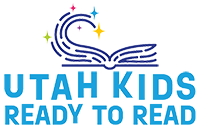Activity CalendarS
Information | Books | Songs | Games & Activitites | Websites
Children learn math skills at varying levels. If you are following a curriculum, it may dictate what math concepts to work on in a particular order. Multiple and frequent meaningful exposures to these skills is highly recommended.
For more information, please refer to the Early Learning Standards Ages 3 to 5.There are several books about counting and numbers that you may already have available to you. Here are some additional books to add to your library. If you have the books on hand, please use them. If not, you will find the links attached for these book titles:
- One Stuck Duck by Phyllis Root
- Chicka Chicka 1, 2, 3 by Bill Martin
- Mouse Count by Ellen Stoll Walsh
- The Very Hungry Caterpillar by Eric Carle
- The Very Grouchy Ladybug by Eric Carle
- Pete the Cat and His Four Groovy Buttons by Eric Litwin
- How Many Bugs in a Box by David A. Carter
- Counting 1-10
- Seasame Street: 0-20 Counting Songs - find the number you want to teach or review that day
- Count to 10 With Our Friends - Jack Hartmann - ASL signs for numbers
- Let’s Count to 20 Song for Kids
- Number Song 1-20 for Children
- Go on a number hunt. Find the number of the day that you are teaching to your child(ren). You can find numbers on remotes, calculators, microwaves, timers, clocks, etc. (Math 3 & 4 yr. 1.4)
- Place the numbers and a picture representation of their value on a sheet of paper. Have children gather that many objects and place them on the picture representation. You can discuss if they need more or less objects. (Math 3 & 4 yr. 1.6)
- Add numbers and counting to snack or lunch routines. You could lead these activities by asking; How many fruit snacks or crackers are in your bag? Who has more, who has less? Let’s touch and count how many snacks you have. The last number you counted tells us how many were in the bag. How many did you count? (Math 4 yr. 2.1, Math 4 yr. 2.2)
- Sort your snack into different boxes with the number printed on them. For example, you could have a paper with 6 different boxes. You could label them either in order or in random order from 1-6. Your child wiould then place that many food items in that square. Remove_ 1 goldfish in one box, 3 goldfish in another, etc. (Math 3 & 4 yr. 1.5)
- Create a sheet of paper with a collage of numbers on it. Use dot markers to locate specifiednumbers on the page. (Math 3 & 4 yr. 1.4)
- Stack blocks and count how high you can build a tower. (Math 3 & 4 yr. 1.6)
- Have sheets of paper with numbers printed on them. The numbers will vary based on the amount of numbers your child(ren) knows. Ask the child(ren) to place a tower of legos on the correct paper. (Math 3 & 4 yr. 1.1)
- Count objects around the environment. How many chairs do we have? How many tables do you see? How many shoes can we find? (Math 3 & 4 yr. 1.1)
- Play a simple game of dominoes. Count the dots on each side and match the same numbers to one another. (Math 3 & 4 yr. 1.1)
- Ask your child(ren) to bring you or hand you objects building up to 5 objects and take apart objects within 5. If I have 3 fruit snacks in this hand and you have 2 fruit snacks, how many do we have all together? We started with 5 fruit snacks, go ahead and eat some. How many do we have left? (Math 4 yr. 2.2, Math 3 & 4 yr. 3.4)
- Use common objects to measure items in the environment. For example, let’s see how many legos it takes to measure your favorite toys. Talk about which objects are longer, shorter, smaller, taller, heavier, lighter, etc. (Math 3 & 4 yr. 3.1, Math 4 yr. 3.2)
Websites


